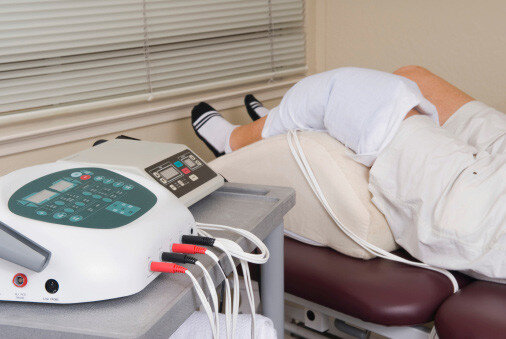Muscle Simulator Not Working and "Shocking" Patients
Have you ever had your patients complain that the muscle simulator you use is “shocking” them? To make things even worse, the problem is intermittent. The unit works fine with some patients but not with others. This makes you wonder if it is just an oversensitive patient, or if is it the machine that is not working. Have you ever had one of your patients suddenly jump or yell saying that the muscle simulator is shocking them? Could it be that the machine isn’t working?
Over the years we have found that 90% of the problems with non-working electric muscle stimulators, pertain to faulty lead wires, electrode pads, or bad conductive gel. These problems can make the connection from the unit to the patient bad. What tends to happen is that the unit is not actually “shocking” the patient but rather a good connection between the patient and the unit is not being made.
When the patient leads do not make good contact, there is a tendency to increase the unit’s intensity up so the patient will feel some output. Because this connection is so bad, the patient is not feeling what the machine is actually putting out, and if they did they would not be comfortable at all!
At this point something changes, the wires move or the patient moves and suddenly there is a good connection. The patient goes from a somewhat comfortable feeling, to suddenly feeling the full dosage of the muscle stimulator, which had been turned way up high. This is what “shocks” them.
Also Read: Important Electrical Safety Inspection Information for Medical Equipment
1) Check the Electrode Applicator Pads on the Muscle Simulator or Get Some New Ones
Bad pads are the very first thing to check. If you are use disposable pads over and over again or on more than one patient you shouldn’t be. Throw them away! Disposable pads are designed to be used once and tossed. If you use carbon pads these also wear out. Your service tech should be able to read the connectivity (resistance) of them. Carbon pads tend to get hardened and rigid over time, whereas new pads are soft and flexible making them easier to mold to the patient’s skin for good connectivity.
2) Faulty Lead Wires & Patient Cables
Like pads, the cables between the muscle stim unit and the pads also wear out. The wire’s rubber insulation gets old and brittle which makes the conductor inside break at flex points on the cable. When old cables are flexed in a certain position, the wire can still make some contact which allows you to believe that the cable is still good.
When the old wire is moved a certain way, it will suddenly make a good connection, which will has this same “shocking” effect on the patient. The way to tell if your leads are bad is by holding onto the end of them tight and giving the wire a good tug. This will either break the connection entirely, so cable is no longer usable.
3) The Lead Wire Connection in the Machine Muscle Simulator
The connectors where the patient cable plugs into the machine do wear out. Because the wires sit inside them, gravity itself will keep the tension inside the plug in one place. When the cables get moved around, it will lose its connection to the loose connectors inside the outlet. This also makes for an intermittent connection. Have your repair tech replace the connectors inside the machine if this is the cause of the problem.
3) Bad Electrode Gel
Out of date electrode gel can also cause a connection problem in the muscle simulator. It may sound strange but as gel ages, it loses its effectiveness. Check the date on your electrode gel, sometimes out of date gel can cause the connection problem.
Also Know: Invacare Oxygen Concentrator is Beeping, What Does It Mean?
If you ever find yourself unsure about something regarding your device, or if you require on-site muscle simulation device repair , feel free to reach out to the Medicanix team for prompt assistance!
Toll Free landline number: 800-937-3724

